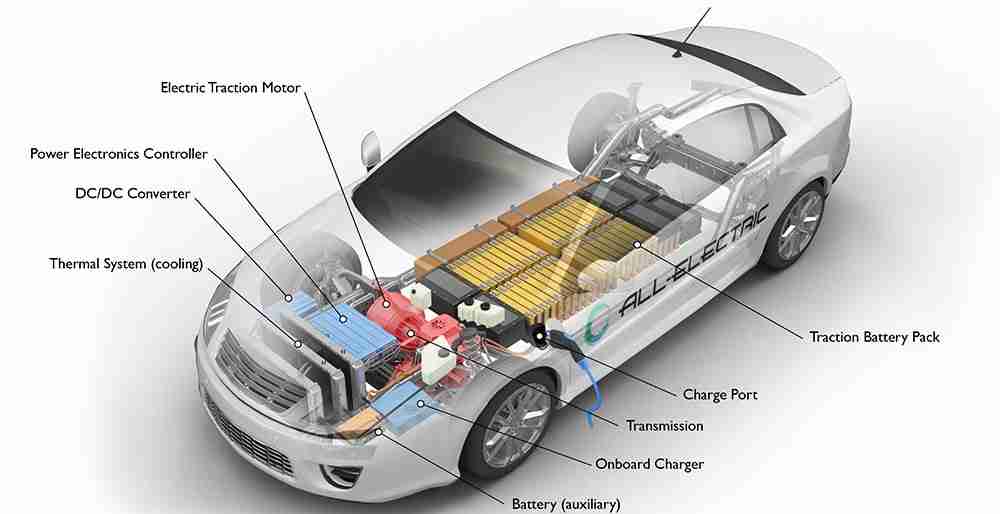The electric vehicle (EV) industry is at the forefront of a global transportation revolution, and at the heart of every electric vehicle lies its motor—a critical component that defines performance, efficiency, and sustainability. As the world steadily moves away from fossil fuel-powered vehicles, understanding the market intelligence behind EV motors becomes essential for stakeholders, investors, and innovators. This article explores the current dynamics, technological advancements, competitive landscape, and emerging opportunities shaping the electric vehicle motor market.

Understanding the EV Motor Market Landscape
The electric vehicle motor market has witnessed exponential growth in recent years, driven by stringent environmental regulations, advancements in battery technology, and increasing consumer preference for sustainable mobility. Electric motors convert electrical energy into mechanical energy to power the vehicle, replacing internal combustion engines (ICEs) in EVs.
The global EV motor market was valued at USD 8.5 billion in 2023 and is projected to reach USD 27 billion by 2030, growing at a CAGR of over 18%. This surge is propelled by rising EV sales, especially in countries like China, the United States, Germany, and Norway, which are aggressively promoting electric mobility through policy incentives and infrastructure development.
Types of Electric Motors in the Market
Market intelligence highlights three main types of electric motors used in EVs:
Permanent Magnet Synchronous Motors (PMSM) – Widely used due to high efficiency, compact size, and powerful performance. Tesla’s early models and many premium EVs use PMSMs.
Induction Motors (IM) – Known for rugged construction and cost-effectiveness. Suitable for high-speed applications.
Brushless DC Motors (BLDC) – Common in two-wheelers and electric scooters due to lower maintenance and simplicity.
As technology evolves, newer motor types such as axial flux motors and switched reluctance motors (SRM) are gaining traction, offering enhanced performance and lower dependency on rare earth materials.
Key Market Drivers
Government Incentives & Policies: Subsidies, tax breaks, and emission norms push manufacturers and consumers toward electric vehicles, increasing demand for EV motors.
Battery Advancements: Improved battery range and efficiency make electric motors more viable across vehicle segments.
Consumer Awareness: Growing public interest in eco-friendly alternatives boosts the electric motor market indirectly through increased EV adoption.
Automaker Electrification Goals: Major OEMs have committed to full or partial electrification by 2030–2040, driving demand for motor technologies.
Regional Intelligence and Market Penetration
Asia-Pacific dominates the market, with China accounting for nearly 50% of global EV motor production. Local manufacturers and government backing play a pivotal role.
Europe follows closely, driven by the EU’s Green Deal, stringent emission regulations, and rising EV sales in Germany, France, and Scandinavia.
North America is rapidly expanding, especially with initiatives like the U.S. Inflation Reduction Act, which boosts EV manufacturing and infrastructure.
Competitive Landscape
The market features a mix of global giants and specialized players:
Nidec Corporation: Known for developing compact, lightweight, and high-efficiency EV motors.
Bosch: Offers integrated electric axle drive solutions.
Tesla: Develops in-house high-performance electric motors to optimize vehicle performance.
Toshiba, Siemens, Continental AG: Active players offering diverse motor technologies tailored to various vehicle applications.
Partnerships, joint ventures, and strategic acquisitions are common as companies race to develop proprietary motor technology and secure supply chains.
Challenges in the EV Motor Market
Despite its upward trajectory, the EV motor market faces several challenges:
Rare Earth Dependency: Most high-efficiency motors rely on rare earth magnets, posing supply chain and geopolitical risks.
Thermal Management: Efficient cooling systems are essential for high-performance motors, especially in hotter climates.
High Initial Costs: Advanced motor systems can increase vehicle costs, limiting accessibility in price-sensitive markets.
Standardization Issues: Lack of global standardization in motor types and configurations can complicate manufacturing processes.
Future Outlook and Market Intelligence Trends
Looking ahead, several trends are expected to redefine the market:
In-House Motor Manufacturing: Automakers are increasingly producing motors in-house to reduce dependency and optimize design.
Software Integration: Intelligent motors with embedded sensors and software are enabling predictive maintenance and efficiency optimization.
Sustainable Materials: Research is ongoing to develop motors using alternative materials to minimize environmental impact.
Segment Diversification: Two- and three-wheeler EVs, electric buses, and commercial vehicles are expanding the market scope beyond passenger cars.
Conclusion
The electric vehicle motor market is not just about propulsion—it's a symbol of the broader transformation happening across the mobility industry. Market intelligence reveals a sector characterized by rapid innovation, fierce competition, and high growth potential. As electrification becomes the new normal, electric motors will continue to evolve, powering a cleaner, smarter, and more sustainable future. Companies that embrace innovation and adaptability will be best positioned to lead in this high-stakes arena.




